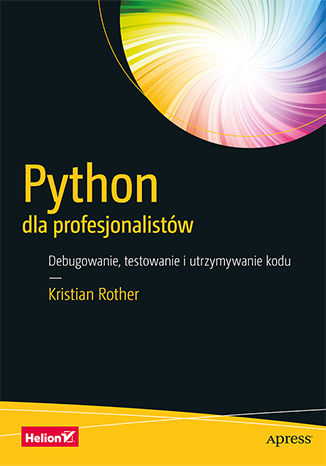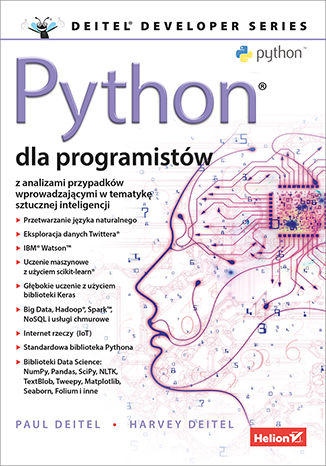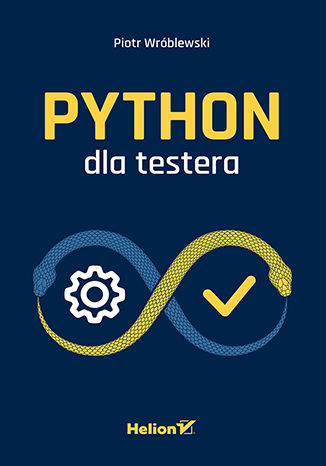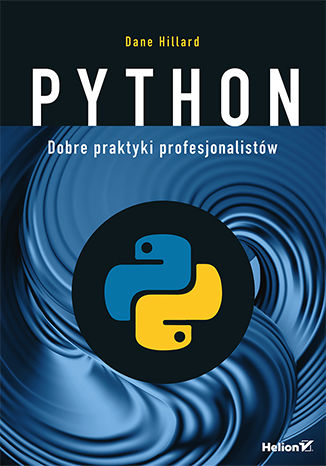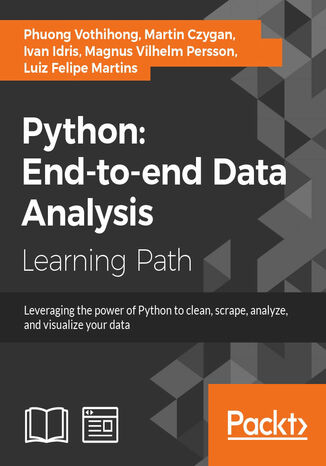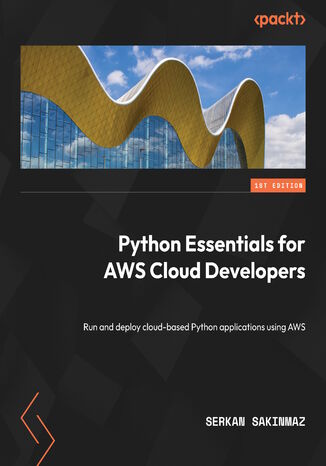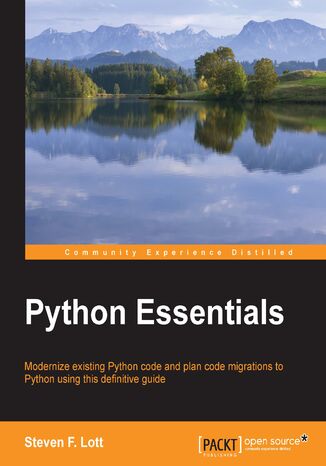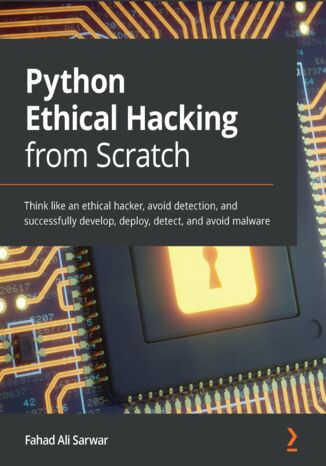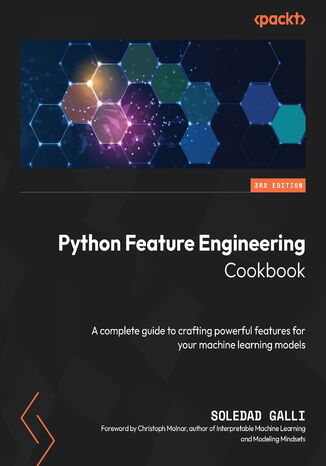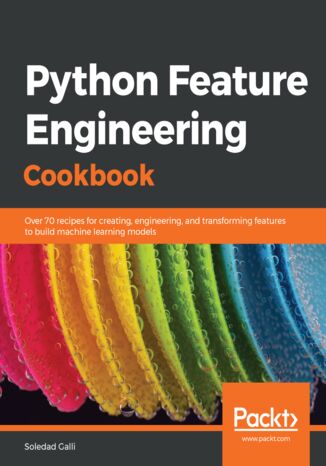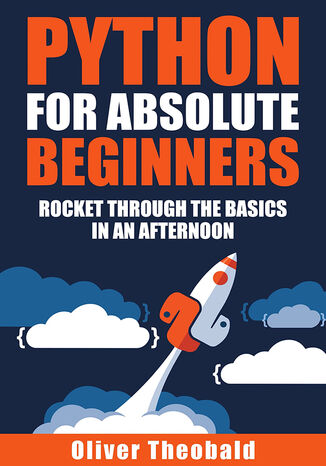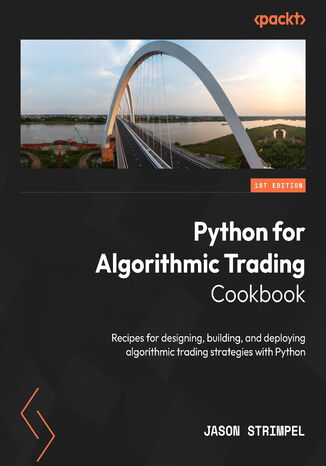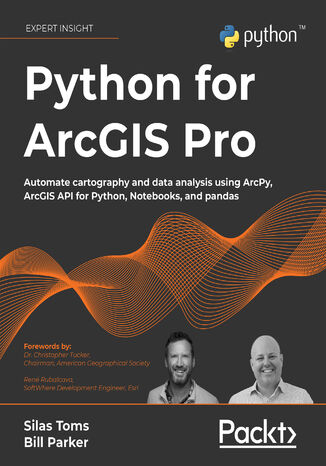Kategorie
Ebooki
-
Biznes i ekonomia
- Bitcoin
- Bizneswoman
- Coaching
- Controlling
- E-biznes
- Ekonomia
- Finanse
- Giełda i inwestycje
- Kompetencje osobiste
- Komputer w biurze
- Komunikacja i negocjacje
- Mała firma
- Marketing
- Motywacja
- Multimedialne szkolenia
- Nieruchomości
- Perswazja i NLP
- Podatki
- Polityka społeczna
- Poradniki
- Prezentacje
- Przywództwo
- Public Relation
- Raporty, analizy
- Sekret
- Social Media
- Sprzedaż
- Start-up
- Twoja kariera
- Zarządzanie
- Zarządzanie projektami
- Zasoby ludzkie (HR)
-
Dla dzieci
-
Dla młodzieży
-
Edukacja
-
Encyklopedie, słowniki
-
E-prasa
- Architektura i wnętrza
- BHP
- Biznes i Ekonomia
- Dom i ogród
- E-Biznes
- Ekonomia i finanse
- Ezoteryka
- Finanse
- Finanse osobiste
- Firma
- Fotografia
- Informatyka
- Kadry i płace
- Kobieca
- Komputery, Excel
- Księgowość
- Kultura i literatura
- Naukowe i akademickie
- Ochrona środowiska
- Opiniotwórcze
- Oświata
- Podatki
- Podróże
- Psychologia
- Religia
- Rolnictwo
- Rynek książki i prasy
- Transport i Spedycja
- Zdrowie i uroda
-
Historia
-
Informatyka
- Aplikacje biurowe
- Bazy danych
- Bioinformatyka
- Biznes IT
- CAD/CAM
- Digital Lifestyle
- DTP
- Elektronika
- Fotografia cyfrowa
- Grafika komputerowa
- Gry
- Hacking
- Hardware
- IT w ekonomii
- Pakiety naukowe
- Podręczniki szkolne
- Podstawy komputera
- Programowanie
- Programowanie mobilne
- Serwery internetowe
- Sieci komputerowe
- Start-up
- Systemy operacyjne
- Sztuczna inteligencja
- Technologia dla dzieci
- Webmasterstwo
-
Inne
-
Języki obce
-
Kultura i sztuka
-
Lektury szkolne
-
Literatura
- Antologie
- Ballada
- Biografie i autobiografie
- Dla dorosłych
- Dramat
- Dzienniki, pamiętniki, listy
- Epos, epopeja
- Esej
- Fantastyka i science-fiction
- Felietony
- Fikcja
- Humor, satyra
- Inne
- Klasyczna
- Kryminał
- Literatura faktu
- Literatura piękna
- Mity i legendy
- Nobliści
- Nowele
- Obyczajowa
- Okultyzm i magia
- Opowiadania
- Pamiętniki
- Podróże
- Poemat
- Poezja
- Polityka
- Popularnonaukowa
- Powieść
- Powieść historyczna
- Proza
- Przygodowa
- Publicystyka
- Reportaż
- Romans i literatura obyczajowa
- Sensacja
- Thriller, Horror
- Wywiady i wspomnienia
-
Nauki przyrodnicze
-
Nauki społeczne
-
Podręczniki szkolne
-
Popularnonaukowe i akademickie
- Archeologia
- Bibliotekoznawstwo
- Filmoznawstwo
- Filologia
- Filologia polska
- Filozofia
- Finanse i bankowość
- Geografia
- Gospodarka
- Handel. Gospodarka światowa
- Historia i archeologia
- Historia sztuki i architektury
- Kulturoznawstwo
- Lingwistyka
- Literaturoznawstwo
- Logistyka
- Matematyka
- Medycyna
- Nauki humanistyczne
- Pedagogika
- Pomoce naukowe
- Popularnonaukowa
- Pozostałe
- Psychologia
- Socjologia
- Teatrologia
- Teologia
- Teorie i nauki ekonomiczne
- Transport i spedycja
- Wychowanie fizyczne
- Zarządzanie i marketing
-
Poradniki
-
Poradniki do gier
-
Poradniki zawodowe i specjalistyczne
-
Prawo
- BHP
- Historia
- Kodeks drogowy. Prawo jazdy
- Nauki prawne
- Ochrona zdrowia
- Ogólne, kompendium wiedzy
- Podręczniki akademickie
- Pozostałe
- Prawo budowlane i lokalowe
- Prawo cywilne
- Prawo finansowe
- Prawo gospodarcze
- Prawo gospodarcze i handlowe
- Prawo karne
- Prawo karne. Przestępstwa karne. Kryminologia
- Prawo międzynarodowe
- Prawo międzynarodowe i zagraniczne
- Prawo ochrony zdrowia
- Prawo oświatowe
- Prawo podatkowe
- Prawo pracy i ubezpieczeń społecznych
- Prawo publiczne, konstytucyjne i administracyjne
- Prawo rodzinne i opiekuńcze
- Prawo rolne
- Prawo socjalne, prawo pracy
- Prawo Unii Europejskiej
- Przemysł
- Rolne i ochrona środowiska
- Słowniki i encyklopedie
- Zamówienia publiczne
- Zarządzanie
-
Przewodniki i podróże
- Afryka
- Albumy
- Ameryka Południowa
- Ameryka Środkowa i Północna
- Australia, Nowa Zelandia, Oceania
- Austria
- Azja
- Bałkany
- Bliski Wschód
- Bułgaria
- Chiny
- Chorwacja
- Czechy
- Dania
- Egipt
- Estonia
- Europa
- Francja
- Góry
- Grecja
- Hiszpania
- Holandia
- Islandia
- Litwa
- Łotwa
- Mapy, Plany miast, Atlasy
- Miniprzewodniki
- Niemcy
- Norwegia
- Podróże aktywne
- Polska
- Portugalia
- Pozostałe
- Przewodniki po hotelach i restauracjach
- Rosja
- Rumunia
- Słowacja
- Słowenia
- Szwajcaria
- Szwecja
- Świat
- Turcja
- Ukraina
- Węgry
- Wielka Brytania
- Włochy
-
Psychologia
- Filozofie życiowe
- Kompetencje psychospołeczne
- Komunikacja międzyludzka
- Mindfulness
- Ogólne
- Perswazja i NLP
- Psychologia akademicka
- Psychologia duszy i umysłu
- Psychologia pracy
- Relacje i związki
- Rodzicielstwo i psychologia dziecka
- Rozwiązywanie problemów
- Rozwój intelektualny
- Sekret
- Seksualność
- Uwodzenie
- Wygląd i wizerunek
- Życiowe filozofie
-
Religia
-
Sport, fitness, diety
-
Technika i mechanika
Audiobooki
-
Biznes i ekonomia
- Bitcoin
- Bizneswoman
- Coaching
- Controlling
- E-biznes
- Ekonomia
- Finanse
- Giełda i inwestycje
- Kompetencje osobiste
- Komunikacja i negocjacje
- Mała firma
- Marketing
- Motywacja
- Nieruchomości
- Perswazja i NLP
- Podatki
- Polityka społeczna
- Poradniki
- Prezentacje
- Przywództwo
- Public Relation
- Sekret
- Social Media
- Sprzedaż
- Start-up
- Twoja kariera
- Zarządzanie
- Zarządzanie projektami
- Zasoby ludzkie (HR)
-
Dla dzieci
-
Dla młodzieży
-
Edukacja
-
Encyklopedie, słowniki
-
E-prasa
-
Historia
-
Informatyka
-
Inne
-
Języki obce
-
Kultura i sztuka
-
Lektury szkolne
-
Literatura
- Antologie
- Ballada
- Biografie i autobiografie
- Dla dorosłych
- Dramat
- Dzienniki, pamiętniki, listy
- Epos, epopeja
- Esej
- Fantastyka i science-fiction
- Felietony
- Fikcja
- Humor, satyra
- Inne
- Klasyczna
- Kryminał
- Literatura faktu
- Literatura piękna
- Mity i legendy
- Nobliści
- Nowele
- Obyczajowa
- Okultyzm i magia
- Opowiadania
- Pamiętniki
- Podróże
- Poezja
- Polityka
- Popularnonaukowa
- Powieść
- Powieść historyczna
- Proza
- Przygodowa
- Publicystyka
- Reportaż
- Romans i literatura obyczajowa
- Sensacja
- Thriller, Horror
- Wywiady i wspomnienia
-
Nauki przyrodnicze
-
Nauki społeczne
-
Popularnonaukowe i akademickie
-
Poradniki
-
Poradniki zawodowe i specjalistyczne
-
Prawo
-
Przewodniki i podróże
-
Psychologia
- Filozofie życiowe
- Komunikacja międzyludzka
- Mindfulness
- Ogólne
- Perswazja i NLP
- Psychologia akademicka
- Psychologia duszy i umysłu
- Psychologia pracy
- Relacje i związki
- Rodzicielstwo i psychologia dziecka
- Rozwiązywanie problemów
- Rozwój intelektualny
- Sekret
- Seksualność
- Uwodzenie
- Wygląd i wizerunek
- Życiowe filozofie
-
Religia
-
Sport, fitness, diety
-
Technika i mechanika
Kursy video
-
Bazy danych
-
Big Data
-
Biznes, ekonomia i marketing
-
Cyberbezpieczeństwo
-
Data Science
-
DevOps
-
Dla dzieci
-
Elektronika
-
Grafika/Wideo/CAX
-
Gry
-
Microsoft Office
-
Narzędzia programistyczne
-
Programowanie
-
Rozwój osobisty
-
Sieci komputerowe
-
Systemy operacyjne
-
Testowanie oprogramowania
-
Urządzenia mobilne
-
UX/UI
-
Web development
-
Zarządzanie
Podcasty
Python dla profesjonalistów. Debugowanie, testowanie i utrzymywanie kodu
Python istnieje już ponad 25 lat. Nie jest trudnym językiem i oferuje ogromne możliwości. Tworzenie dobrych programów w Pythonie wymaga jednak od programistów dużych umiejętności. Cykl rozwoju oprogramowania jest pełen pułapek nieznanych początkującym koderom. Mimo to w podręcznikach Pythona niewiele uwagi poświęca się debugowaniu i testowaniu, a przecież etapy te mają kluczowe znaczenie dla jakości kodu i funkcjonalności tworzonego oprogramowania. Ta książka uczyni Cię lepszym programistą! Dzięki przedstawionym tu podstawowym praktykom stosowanym przez najbardziej profesjonalnych programistów Pythona będziesz tworzył doskonalszy kod. Zoptymalizujesz z nimi procesy debugowania programów, pisania automatycznych testów i utrzymywania oprogramowania bez nadmiernego wysiłku. Przedstawione tu techniki będą szczególnie przydatne dla programistów zajmujących się analizą danych, tworzeniem stron internetowych oraz rozwijaniem oprogramowania naukowego. Najważniejsze zagadnienia przedstawione w książce: błędy semantyczne i wyjątki, sposoby eliminacji błędów i narzędzia do debugowania, zasady i techniki testowania aplikacji, mocne i słabe strony testów automatycznych, mechanizm kontroli wersji, kontrola typów i sporządzanie dokumentacji. Ty też możesz programować w Pythonie! Dr Kristian Rother zajmuje się programowaniem od wczesnego dzieciństwa. Jest również specjalistą w dziedzinie bioinformatyki: prowadził badania struktur 3D białek i RNA na Uniwersytecie Humboldta w Berlinie. Przez wiele lat doskonalił swoje umiejętności nauczania, a obecnie pracuje w Berlinie jako profesjonalny trener. Prowadzi szkolenia z programowania w Pythonie, uczy biochemii, statystyki, testowania aplikacji internetowych, wyszukiwarek, wygłasza prezentacje.
Python dla programistów. Big Data i AI. Studia przypadków
Programiści lubią Pythona. Ujmuje ich wyrazistość, zwięzłość i interaktywność kodu, a także bogata kolekcja narzędzi i bibliotek. Zalety te są uzupełniane przez rozwój innych technologii, zwiększającą się dostępność coraz szybszego sprzętu oraz rosnącą przepustowość internetu. Z kolei to wszystko wiąże się z powstawaniem niewyobrażalnych ilości danych, które trzeba magazynować i efektywnie przetwarzać. Większość innowacji w świecie informatyki koncentruje się wokół danych. A z tymi zadaniami można sobie poradzić dzięki imponującym możliwościom Pythona i jego bibliotek. Ta książka ułatwi naukę Pythona metodą analizy i eksperymentów. Zawiera ponad 500 przykładów faktycznie wykorzystywanego kodu - od krótkich bloków po kompletne studia przypadków. Pokazano, w jaki sposób można kodować w interpreterze IPython i notatnikach Jupytera. Znalazł się tu obszerny opis Pythona oraz jego instrukcji sterujących i funkcji, omówiono pracę na plikach, kwestie serializacji w notacji JSON i obsługę wyjątków. Zaprezentowano różne paradygmaty programowania: proceduralnego, w stylu funkcyjnym i zorientowanego obiektowo. Sporo miejsca poświęcono bibliotekom: standardowej bibliotece Pythona i bibliotekom data science do realizacji złożonych zadań przy minimalnym udziale kodowania. Nie zabrakło wprowadzenia do takich zagadnień data science jak sztuczna inteligencja, symulacje, animacje czy przygotowanie danych do analizy. W książce między innymi: przetwarzanie języka naturalnego IBM stosowanie bibliotek scikit-learn i Keras big data, Hadoop(R), Spark™, NoSQL i usługi chmurowe programowanie dla internetu rzeczy (IoT) biblioteki: standardowa, NumPy, Pandas, SciPy, NLTK, YexyBlob, Tweepy, Matplotlib i inne
Wkrocz w świat testów z Pythonem! Wkrocz do strefy "wolnej od zbędnej teorii" Opanuj podstawy najpopularniejszego języka programowania Poznaj praktyczne procedury i skrypty przydatne w codziennej pracy Zdobądź ciekawą i dobrze płatną pracę w branży IT/ICT Też masz wrażenie, że Python jest ostatnimi czasy dosłownie wszędzie? Nic dziwnego - to najbardziej uniwersalny i przystępny język programowania, jaki kiedykolwiek powstał! Jeśli chcesz poznać go od podstaw, sięgnij po odpowiedni podręcznik - taki jak ta książka! To wydanie przeznaczone dla użytkowników Linuxa (także macOS) i Windowsa; ewentualne cechy specyficzne dla konkretnych systemów są na bieżąco wyjaśniane w tekście. Zawiera zagadnienia ukierunkowane na praktyczne potrzeby testerów oprogramowania, którzy pragną wkroczyć w magiczny świat automatyzacji zadań. Została napisana przez autora wielu książek z dziedziny programowania, obecnie kierownika zespołu testerów w dziale rozwoju oprogramowania dużej firmy telekomunikacyjnej, realizującego zaawansowane testy manualne i automatyczne. Opis języka opiera się na najnowszej specyfikacji języka (wersja 3.9x lub wyższe). Środowisko Pythona i polecany pakiety IDE Z terminalem za pan brat Systemy liczbowe i kodowanie dla nieinformatyków Błyskawiczny kurs języka Typy i struktury danych bez tajemnic Interakcja z użytkownikiem Zapis i odczytywanie danych z plików Programowanie obiektowe bez tajemnic Własne biblioteki (moduły) Analiza danych z NumPy i Pandas Wizualizacji wyników pracy z Matplotlib Python i Excel Tajniki plików CSV Proste aplikacje okienkowe z EasyGUI Programuj, uruchamiaj, automatyzuj - przekonaj się, jak dużo oferuje Python!
Python dla zupełnie początkujących. Owoce programowania. Wydanie IV
Python jest wszechstronnym językiem programowania o imponującej elastyczności i wydajności. Można dzięki niemu rozwiązywać przeróżne problemy programistyczne z różnych dziedzin wiedzy. Nawet jeśli nie masz zamiaru stać się pełnoetatowym programistą, prędko się zorientujesz, jak świetnym i elastycznym narzędziem jest Python. Można za jego pomocą budować oprogramowanie, ale również wspierać pracę statystyków, ekonomistów, maklerów giełdowych, biologów, fizyków czy analityków finansowych. Wystarczy tylko znaleźć sposób analizy problemu i nauczyć się implementować go w programie. Z tej książki skorzystasz, nawet gdy nie masz żadnego doświadczenia w projektowaniu i tworzeniu oprogramowania. Dzięki prostym przykładom i zrozumiałemu pseudokodowi, schematom blokowym oraz innym narzędziom zdobędziesz wiedzę o projektowaniu oprogramowania i jego implementowania w języku Python. W każdym rozdziale znalazło się wiele przykładowych projektów oraz zwięzłych i praktycznych programów. Książkę rozpoczęto od przedstawienia podstawowych informacji o przechowywaniu danych, danych wejściowych i wyjściowych, struktur kontrolnych, funkcji, sekwencji, list, operacji wejścia-wyjścia oraz obiektów tworzonych za pomocą klas zdefiniowanych w bibliotece standardowej. Następnie omówiono zagadnienia tworzenia klas, dziedziczenia i polimorfizmu, a także definiowania funkcji rekurencyjnych. W tej książce: Wprowadzenie do Pythona i środowiska IDLE Struktury warunkowe, struktury cykliczne i funkcje Podstawy programowania zorientowanego projektowo Rekurencja i algorytmy rekurencyjne Projektowanie GUI aplikacji Python. Lepszy niż myślisz. Przydatniejszy niż sądzisz.
Python. Dobre praktyki profesjonalistów
Python wydaje się językiem idealnym: ma intuicyjną składnię, jest przyjemny w używaniu, umożliwia tworzenie wydajnego, elastycznego kodu. Przy tym jest wyjątkowo wszechstronny, a stosowanie go w przeróżnych celach ułatwiają liczne biblioteki tworzone przez pasjonatów. To jednak nie zmienia faktu, że aby stać się profesjonalnym programistą Pythona, trzeba nauczyć się tworzyć kod godny profesjonalisty: działający bez błędów, czysty, czytelny i łatwy w utrzymaniu. W tym celu trzeba korzystać z branżowych standardów, które określają styl kodowania, projektowania aplikacji i prowadzenie całego procesu programowania. Należy wiedzieć, kiedy i w jaki sposób modularyzować kod, jak poprawić jakość przez zmniejszenie złożoności i stosować kilka innych, koniecznych praktyk. Ta książka okaże się szczególnie cenna dla każdego, kto zamierza profesjonalnie tworzyć kod w Pythonie. Stanowi jasny i zrozumiały zbiór zasad wytwarzania oprogramowania o najwyższej jakości, praktyk stosowanych przez zawodowych wyjadaczy projektowania i kodowania. Poza teoretycznym omówieniem poszczególnych zagadnień znalazło się tu mnóstwo przykładów i przydatnych ćwiczeń, utrwalających prezentowany materiał. Nie zabrakło krótkiego wprowadzenia do Pythona, przedstawiono też sporo informacji o strukturach danych i różnych podejściach w kontekście osiągania dobrej wydajności kodu. Pokazano, w jaki sposób zapobiegać nadmiernemu przyrostowi kodu podczas rozwijania aplikacji i jak redukować niepożądane powiązania w aplikacji. Dodatkową wartością publikacji jest bogactwo informacji o ogólnej architekturze oprogramowania, przydatnych każdemu zawodowemu programiście. W książce między innymi: podstawy projektowania w Pythonie wysokopoziomowe koncepcje rozwoju oprogramowania abstrakcje i hermetyzacja kodu różne metody testowania kodu tworzenie dużych systemów a rozszerzalność i elastyczność aplikacji Pythona praktykuj profesjonalnie!
Ivan Idris, Luiz Felipe Martins, Martin Czygan, Phuong Vo.T.H, ...
Data analysis is the process of applying logical and analytical reasoning to study each component of data present in the system. Python is a multi-domain, high-level, programming language that offers a range of tools and libraries suitable for all purposes, it has slowly evolved as one of the primary languages for data science. Have you ever imagined becoming an expert at effectively approaching data analysis problems, solving them, and extracting all of the available information from your data? If yes, look no further, this is the course you need!In this course, we will get you started with Python data analysis by introducing the basics of data analysis and supported Python libraries such as matplotlib, NumPy, and pandas. Create visualizations by choosing color maps, different shapes, sizes, and palettes then delve into statistical data analysis using distribution algorithms and correlations. You’ll then find your way around different data and numerical problems, get to grips with Spark and HDFS, and set up migration scripts for web mining. You’ll be able to quickly and accurately perform hands-on sorting, reduction, and subsequent analysis, and fully appreciate how data analysis methods can support business decision-making. Finally, you will delve into advanced techniques such as performing regression, quantifying cause and effect using Bayesian methods, and discovering how to use Python’s tools for supervised machine learning.The course provides you with highly practical content explaining data analysis with Python, from the following Packt books:1. Getting Started with Python Data Analysis.2. Python Data Analysis Cookbook.3. Mastering Python Data Analysis.By the end of this course, you will have all the knowledge you need to analyze your data with varying complexity levels, and turn it into actionable insights.
Python Essentials for AWS Cloud Developers. Run and deploy cloud-based Python applications using AWS
AWS provides a vast variety of services for implementing Python applications, which can pose a challenge for those without an AWS background. This book addresses one of the more predominant problems of choosing the right service and stepping into the implementation of exciting Python apps using AWS.The book begins by showing you how to install Python and create an AWS account, before helping you explore AWS Lambda, EC2, Elastic Beanstalk, and S3 for Python programming. You'll then gain hands-on experience in using these services to build the Python application. As you advance, you'll discover how to debug Python apps using PyCharm, and then start deploying the Python applications on Elastic Beanstalk. You’ll also learn how to monitor Python applications using the CloudWatch service, along with creating and publishing APIs on AWS to access the Python application. The concluding chapters will help you get to grips with storing unstructured and semi-structured data using NoSQL and DynamoDB, as well as advance your knowledge using the Glue serverless data integration service in AWS.By the end of this Python book, you’ll be able to take your application development skills up a notch with AWS services and advance in your career.
Penetration testing enables you to evaluate the security or strength of a computer system, network, or web application that an attacker can exploit. With this book, you'll understand why Python is one of the fastest-growing programming languages for penetration testing. You'll find out how to harness the power of Python and pentesting to enhance your system security.Developers working with Python will be able to put their knowledge and experience to work with this practical guide. Complete with step-by-step explanations of essential concepts and practical examples, this book takes a hands-on approach to help you build your own pentesting tools for testing the security level of systems and networks. You'll learn how to develop your own ethical hacking tools using Python and explore hacking techniques to exploit vulnerabilities in networks and systems. Finally, you'll be able to get remote access to target systems and networks using the tools you develop and modify as per your own requirements.By the end of this ethical hacking book, you'll have developed the skills needed for building cybersecurity tools and learned how to secure your systems by thinking like a hacker.
Soledad Galli, Christoph Molnar
Streamline data preprocessing and feature engineering in your machine learning project with this third edition of the Python Feature Engineering Cookbook to make your data preparation more efficient.This guide addresses common challenges, such as imputing missing values and encoding categorical variables using practical solutions and open source Python libraries. You’ll learn advanced techniques for transforming numerical variables, discretizing variables, and dealing with outliers. Each chapter offers step-by-step instructions and real-world examples, helping you understand when and how to apply various transformations for well-prepared data.The book explores feature extraction from complex data types such as dates, times, and text. You’ll see how to create new features through mathematical operations and decision trees and use advanced tools like Featuretools and tsfresh to extract features from relational data and time series.By the end, you’ll be ready to build reproducible feature engineering pipelines that can be easily deployed into production, optimizing data preprocessing workflows and enhancing machine learning model performance.
Feature engineering is invaluable for developing and enriching your machine learning models. In this cookbook, you will work with the best tools to streamline your feature engineering pipelines and techniques and simplify and improve the quality of your code.Using Python libraries such as pandas, scikit-learn, Featuretools, and Feature-engine, you’ll learn how to work with both continuous and discrete datasets and be able to transform features from unstructured datasets. You will develop the skills necessary to select the best features as well as the most suitable extraction techniques. This book will cover Python recipes that will help you automate feature engineering to simplify complex processes. You’ll also get to grips with different feature engineering strategies, such as the box-cox transform, power transform, and log transform across machine learning, reinforcement learning, and natural language processing (NLP) domains.By the end of this book, you’ll have discovered tips and practical solutions to all of your feature engineering problems.
Feature engineering, the process of transforming variables and creating features, albeit time-consuming, ensures that your machine learning models perform seamlessly. This second edition of Python Feature Engineering Cookbook will take the struggle out of feature engineering by showing you how to use open source Python libraries to accelerate the process via a plethora of practical, hands-on recipes.This updated edition begins by addressing fundamental data challenges such as missing data and categorical values, before moving on to strategies for dealing with skewed distributions and outliers. The concluding chapters show you how to develop new features from various types of data, including text, time series, and relational databases. With the help of numerous open source Python libraries, you'll learn how to implement each feature engineering method in a performant, reproducible, and elegant manner.By the end of this Python book, you will have the tools and expertise needed to confidently build end-to-end and reproducible feature engineering pipelines that can be deployed into production.
This book provides a thorough introduction to Python, starting with basic operations like arithmetic and variable creation. As you progress, you'll delve into more complex topics such as loops, conditionals, functions, and object-oriented programming. By the end, you'll be able to write Python code and use libraries like Pandas to manipulate data efficiently. Practical challenges and exercises help solidify your learning. It’s designed to be engaging and easy to follow, making the Python learning experience as enjoyable as it is informative. As you build your skills, you will also gain hands-on experience by tackling coding exercises that reinforce each concept. Whether you're new to programming or looking to sharpen your Python skills, this book will guide you through every essential aspect of the language, preparing you for real-world applications.
Discover how Python has made algorithmic trading accessible to non-professionals with unparalleled expertise and practical insights from Jason Strimpel, founder of PyQuant News and a seasoned professional with global experience in trading and risk management. This book guides you through from the basics of quantitative finance and data acquisition to advanced stages of backtesting and live trading.Detailed recipes will help you leverage the cutting-edge OpenBB SDK to gather freely available data for stocks, options, and futures, and build your own research environment using lightning-fast storage techniques like SQLite, HDF5, and ArcticDB. This book shows you how to use SciPy and statsmodels to identify alpha factors and hedge risk, and construct momentum and mean-reversion factors. You’ll optimize strategy parameters with walk-forward optimization using VectorBT and construct a production-ready backtest using Zipline Reloaded. Implementing all that you’ve learned, you’ll set up and deploy your algorithmic trading strategies in a live trading environment using the Interactive Brokers API, allowing you to stream tick-level data, submit orders, and retrieve portfolio details.By the end of this algorithmic trading book, you'll not only have grasped the essential concepts but also the practical skills needed to implement and execute sophisticated trading strategies using Python.
Silas Toms, Bill Parker, Dr. Christopher Tucker, René Rubalcava
Integrating Python into your day-to-day ArcGIS work is highly recommended when dealing with large amounts of geospatial data. Python for ArcGIS Pro aims to help you get your work done faster, with greater repeatability and higher confidence in your results.Starting from programming basics and building in complexity, two experienced ArcGIS professionals-turned-Python programmers teach you how to incorporate scripting at each step: automating the production of maps for print, managing data between ArcGIS Pro and ArcGIS Online, creating custom script tools for sharing, and then running data analysis and visualization on top of the ArcGIS geospatial library, all using Python.You’ll use ArcGIS Pro Notebooks to explore and analyze geospatial data, and write data engineering scripts to manage ongoing data processing and data transfers. This exercise-based book also includes three rich real-world case studies, giving you an opportunity to apply and extend the concepts you studied earlier.Irrespective of your expertise level with Esri software or the Python language, you’ll benefit from this book’s hands-on approach, which takes you through the major uses of Python for ArcGIS Pro to boost your ArcGIS productivity.
Rheinwerk Publishing, Inc, Veit Steinkamp
This book provides a thorough introduction to Python programming designed for engineers and scientists. It begins with foundational topics like development environments and program structures, then introduces key Python libraries such as NumPy, SymPy, SciPy, Matplotlib, and VPython. Clear explanations and practical exercises help readers write efficient, well-structured code while progressing through increasingly complex projects.The content covers core programming paradigms including functions, branching, and object-oriented design, followed by numerical analysis with NumPy and symbolic math with SymPy. Detailed chapters on data visualization with Matplotlib and 3D animations with VPython enhance comprehension. Additional focus on statistical computations, Boolean algebra, and interactive GUI programming with Tkinter prepares readers for real-world applications. Each chapter ends with project tasks reinforcing hands-on learning.Throughout the book, readers build a strong skill set combining programming expertise and scientific problem-solving. By the end, they will confidently use Python’s libraries to solve diverse engineering and scientific challenges. This practical, project-based approach ensures knowledge is both solid and immediately useful in research and professional work.

